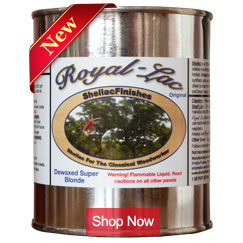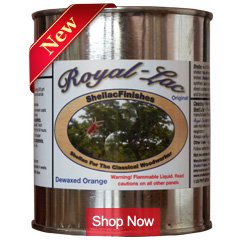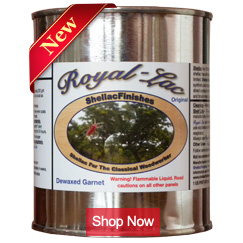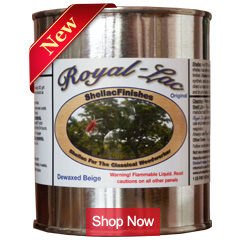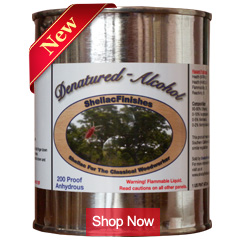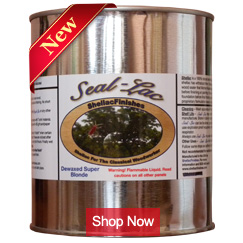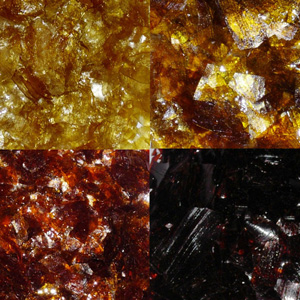Blog
September 06, 2014
A short story from Steve:
Vijay,
What a month!
On August 2nd, I picked up two guitars (and a dog – a long story) from my son. One of the guitars is a Yamaha that has a factory finish of some sort of polyurithane finish (it had a crack I needed to fix). The other guitar is the first one I built back in the spring of 2010 with Robbie O’Brien. This one needed the finished stripped off and replaced. Both guitars were returned (along with the dog) on September 1st.
The guitar getting the refinish had originally been french polished using the U-Beaut product. This finish held up surprisingly well given that this guitar has been used professionally for four years. The problem was that the pore filling that I used, was starting to “bubble” and, in some places, leave the wood (taking the finish with it). The neck was especially rough.
I used died drywall compound (sanded back to just the pores) as a pore-fill, applying the U-Beaut directly over the resulting surface. The problem occurred just in some areas, not everwhere. Being my first guitar, I’ll take the blame for somehow not doing it correctly; the U-beaut did it’s job in my opinion.
I spent several hours sanding the entire instrument back to bare wood, ending up with 320 grit. Then I applied three separate layers of Aquacoat pore filler, scuff-sanding it with 600 grit. On the top of the guitar (spruce), I applied two coats of egg white as a sealer, sanding back to 1000 grit.
I followed Robbie’s recommended application schedule, padding on a 2 lb cut (straight from the jar) for 3 – 4 times per day, then sanding level using 600 grit prior to the next application.
After the first day of application, I took out 2 ounces of the 2 lb cut Royallac and mixed in 2 ounces of alcohol to use in the later stages (for a smoother application), saving this in a clean container. This step will be referred to as “lucky” later on in the story.
Halfway through the second day of 2 lb application, I managed to bump the open Royallac jar with the neck of the guitar, dumping it onto the shop floor. At that point in time, I got the urban dictionary down off the shelf to look up some new bad words to say (which didn’t help much). I now have a shiny spot on the shop floor to help remind me to put the lid back on.
Because of other commitments, I was now running out of time to let the Royallac cure properly. There wasn’t enough time to order more Royallac and have it in time for the September 1st deadline, so I did the only thing I could think of and started using the “lucky” 1-lb cut of the Royallac that I had saved off earlier. I would have liked to been able to apply more layers of 2-lb cut, but since that wasn’t an option, all I could do is to soldier onward. As Robbie tells us, “it’s not what you put on that matters, just what you leave on”. I concentrated on leaving on as much as possible. By the end, I would just whisper the words “1000 grit” over the surface to get it to level out.
I waited until the last possible day to buff the guitar. At that point the Royallac had been curing for only 20 days total. I used Menzerna IP dry polishing compound followed by Menzerna Ato16 (their finest grit). I put a smaller pulley on the buffer motor to slow the wheel speed as well as used a very light touch at the wheel in an attempt to keep from too much heat build-up. The buffing wheel speed was approx 600 rpm.
This process seemed to work, although it took about twice as much time to buff as it would normally. But no burn-through!!
I strung up the guitar and sat down to play and get a feel for the Royallac finish on the neck. Nice and fast! Very smooth. I’m not a very good player, but I like to play finger-style, which means I leave my fingernails a little long on my right hand. So I had to go back to the urban dictionary again when I slipped and put a 2 inch long scratch just below the soundhole. Arrrgh!
Well, I had approx. 36 hours before I had to deliver the guitar. fortunately, the scratch didn’t go into the wood, only the Royallac. With nothing to loose, a hope and a praryer, I drop-filled the scratch with thin CA glue and waited an hour for it to harden. Then I scraped it level with a masked razor blade, followed up with gentle sanding of the area with 1000 thru 2000 grit wet paper. I had maybe a capful of 1-lb Royallac left, plus what was left in the muneca, and plenty of alcohol. At 15-minute intervals over the next three hours, I applied the thinned Royallac over the 1-inch circle of ‘mistake’.
The next morning, I VERY gently sanded with 2000 grit wet paper. Using my finger inside a clean rag, I gently buffed the area with the Menzurna grits as before. Whew!! I know it’s there, but no one else can see it. I feel like Felix the Cat having used up 8 of my 9 lives.
The guitars (and dog) were delivered on labor day.
The long dog story is as follows. As I mentioned earlier, my son is a professional musician. He had the opportunity to travel with Garrison Keillor’s “A Prairie Home Companion” show on a cruise ship in the Baltic Sea for three weeks during August. As his girlfriend was invited along, that left the “grand dog” needing somewhere to stay. Plus I had offered to fix his guitars while he was overseas. Bill The Dog apparently had the time of his life. I know I did.
Steve
September 09, 2014
Rob McAllister sent this email to me after he finished his guitar with Royal-Lac.
“Note, on this guitar I mixed the Super-Blonde and the Orange together (at about 50-50) to get the color I was after.
I was impressed on how well Royal-Lac performed while French Polishing my guitar.
I did find it a little tackier than regular shellac.
So, I cut the finish down to a 3/4 pound cut and it worked very well and produced a beautiful finish.”
Here is Rob’s guitar with Royal-Lac. I’ll let the photo do the talking.
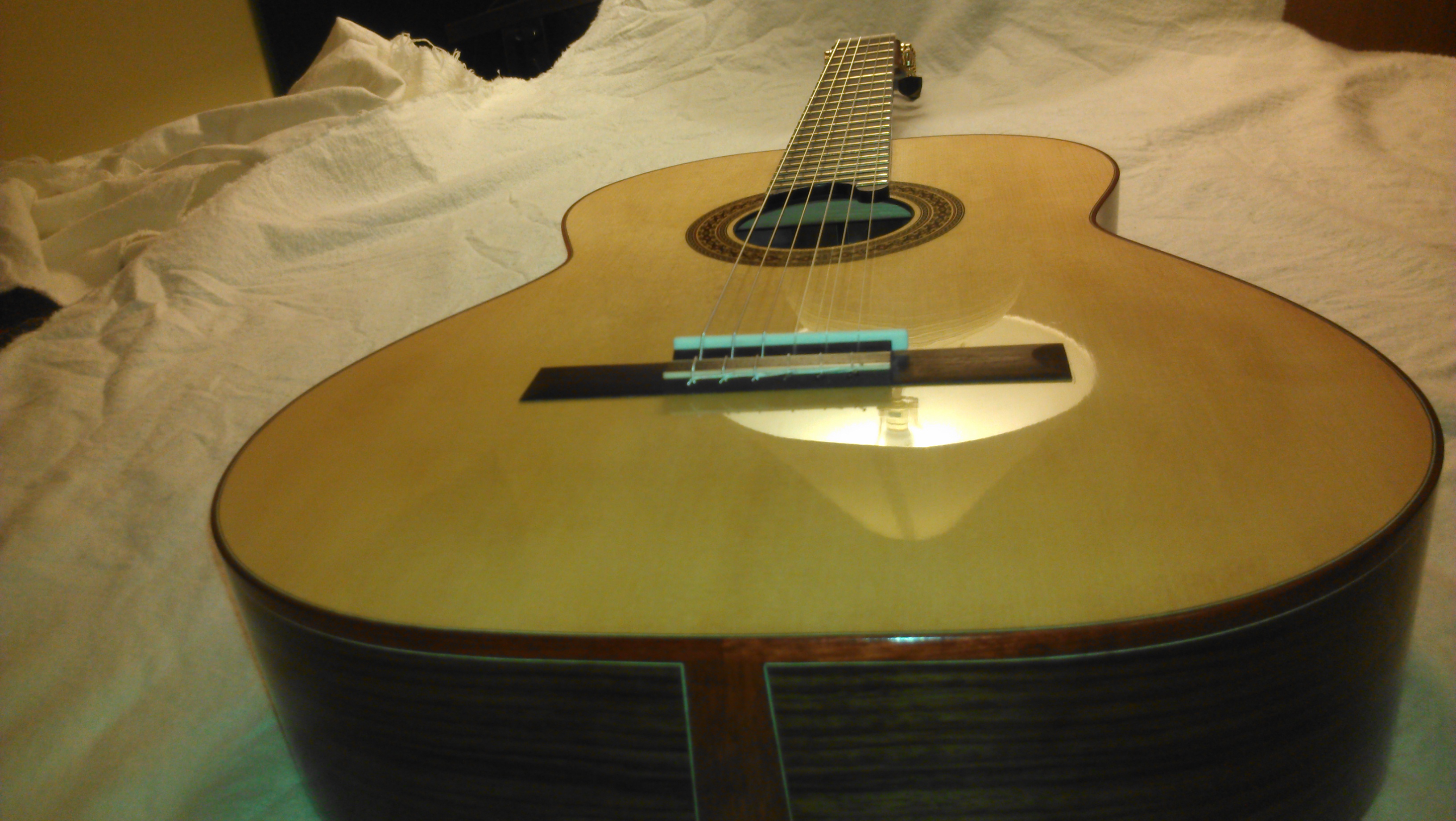
September 27, 2014
Well, its been a hectic month and I have found no time to post any news on my blog. I have been very busy testing Royal-Lac as per ANSI/KCMA A161.1-2012 standards. It is a standard written by the Kitchen Cabinet Manufacturers Association (KCMA) and submitted to American National Standards Institute (ANSI). KCMA is a trade body that qualifies cabinets that meet its Standards requirements. One of them is a set of Finish related tests over humidity and temperature and the other related to durability of the Finish against household chemicals, food and drinks. I was keen on getting Royal-Lac tested so that I have data to show that Royal-Lac’s durability is as good as any other finish. I am proud to say that all tests passed with flying colors. As a matter of fact I went beyond the limits prescribed in the standard. The Units Under Test (UUT) showed no signs of damage. A Press Release will follow soon.
That’s all for now and getting back to work to launch Royal-Lac in aerosol cans. Coming to you soon!!

